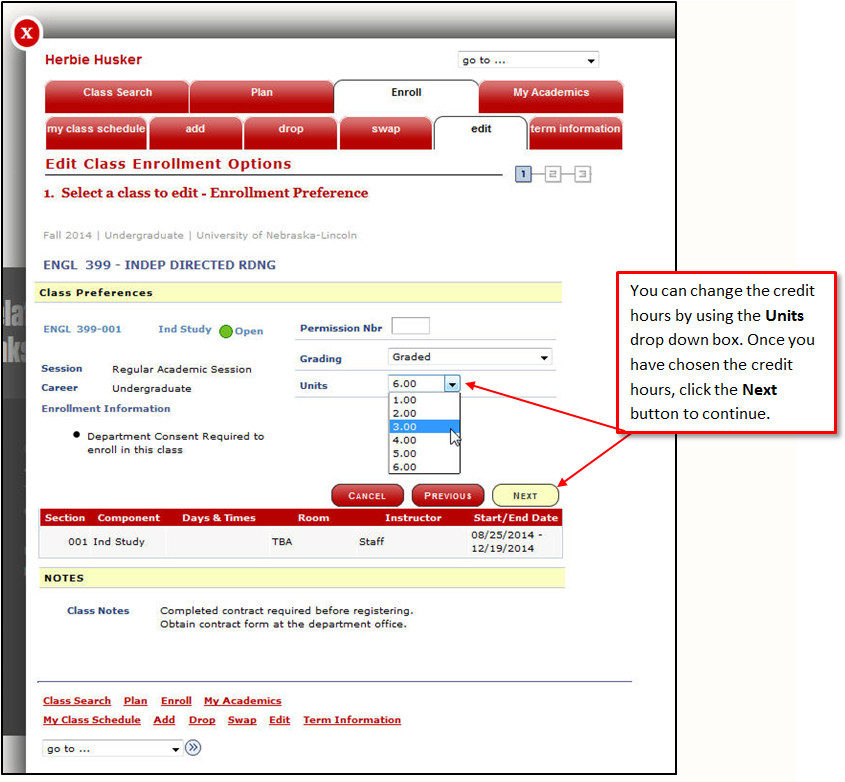Kappa Kappa Gamma (???) ("Kappa") is a collegiate women's fraternity, founded at Monmouth College in Monmouth, Illinois, United States. Although the groundwork of the organization was developed as early as 1869, the 1876 Convention voted that October 13, 1870 should be recognized as the official Founders Day, because no earlier charter date could be determined. This makes Kappa Kappa Gamma one of the oldest extant women's Greek-letter societies.
Kappa has a total membership of more than 260,000 women, with 140 collegiate chapters in the United States and Canada and 307 alumnae associations worldwide.
Kappa Kappa Gamma is a women's fraternity, because it was founded before the term "sorority" came into use. Because men were able to create fraternity groups, Kappa's founders thought they should be able to do the same. However, since it admits only women, it is referred to as a sorority. Kappa Kappa Gamma is also referred to as "KKG" and "Kappa".

History
The idea of Kappa Kappa Gamma was conceived in a conversation between two college women, Mary Louise Bennett and Hannah Jeannette Boyd, on a wooden bridge over a stream on the Monmouth College campus in the late 1860s. Though the coeducational college was considered progressive at the time, the women were dissatisfied with the fact that while men enjoyed membership in fraternities, women had few equivalent organizations for companionship, support, and advancement, and were instead limited to literary societies. Bennett and Boyd began to seek "the choicest spirits among the girls, not only for literary work, but also for social development", beginning with their friend Mary Moore Stewart. Stewart, Boyd, and Bennett met around 1869 in the Amateurs des Belles Lettres Hall, a literary society of which the women were active members when they first decided to form a new society. Soon after, they recruited three additional women, Anna Elizabeth Willits, Martha Louisa Stevenson, and Susan Burley Walker, to join in founding the fraternity.
The six founders met at the home of Anna Willits to lay the groundwork for the formation of the first chapter of Kappa Kappa Gamma, later known as the Alpha Chapter. It was there that they chose the golden key as their badge and prepared to make their official debut by ordering their badges from Lou Bennett's family jeweler. A formal charter was also drawn up by Minnie Stewart's father, who was an attorney in the state of Illinois.
The six founders declared their intention to organize as a women's fraternity when on October 13, 1870, they marched into the most public venue on Monmouth campus, the chapel, wearing their golden key badges in their hair. This day is nationally recognized by the fraternity as "Founders Day".
In 1871, the young fraternity expanded by chartering their Beta Chapter at nearby St. Mary's Seminary. The next year, the fraternity expanded again to Gamma Chapter at Smithson College and Delta Chapter at Indiana University. Though the Beta and Gamma chapters failed to survive more than a few years, the Delta chapter became the fraternity's oldest continuously active chapter (Alpha was closed in 1874 but later re-established) and contributed a great deal to the organization of the fraternity in its early years.
Since 1870, Kappa has continued to expand and has chartered 160 chapters, 138 of which are active today.
The Monmouth Duo
The women's fraternity Pi Beta Phi was founded as I.C. Sorosis at Monmouth College in 1867. Kappa Kappa Gamma was founded at the college in 1870, and in 1888 I.C. Sorosis adopted Greek letters and changed its named to Pi Beta Phi. Because both fraternities have their origins at the same college within three years of one another, they are often called "The Monmouth Duo". On campuses with Pi Beta Phi and Kappa Kappa Gamma chapters, the groups often hold joint social and philanthropic events.
Unl Drop Box Video
Symbols
National symbols
Kappa Kappa Gamma recognizes the following official fraternity symbols:
- The badge of membership is the golden key. The standard badge is one inch in length and is sometimes jeweled with sapphires, pearls or diamonds. On the front of the key are the Greek letters ??? (on the stem) and ??? (on the ward). Often the initials and initiation date of the member to whom the badge belongs are inscribed on the back of the badge. The original keys were larger and were not standardized; many were specially made to the member's specifications, sometimes including stones such as opals. They were also worn on members' lapels, foreheads or hair, whereas today, badges are uniformly worn on the left side of the chest. The badge is worn strictly as an emblem of membership and only by initiated members. Members are encouraged to return their badges to fraternity headquarters upon their death.
- New Members of Kappa Kappa Gamma wear a different badge: a Sigma within a Delta enameled on silver in the two colors of the Fraternity, dark blue and light blue. The new member pin is only worn during the new member period, after which it is returned to the chapter.
- The fraternity colors are light blue and dark blue.
- The owl is the official mascot of Kappa Kappa Gamma.
- The fraternity flower, the fleur-de-lis, combines the fraternity's colors of dark blue and light blue. Since the fleur-de-lis is a mythical flower, the iris is often substituted for practical purposes.
- The fraternity jewel is the blue sapphire. The sapphire is recognized as a symbol of truth, sincerity, and constancy.
- The fraternity Coat of Arms combines all the symbols of Kappa Kappa Gamma : the key, the Greek letters, the new-member pin, the fleur-de-lis, the owl, the head of Minerva, and two colors of blue.
Motto
Kappa Kappa Gamma does not have an open motto. However, the fraternity used "Tradition of Leadership" as a tagline in many fraternity publications. As of June 2012, the new fraternity tagline was changed to "Aspire to Be". Some chapters use "On the heart of each sister, lies one key that binds us" as a motto although it is not nationally recognized.

Leadership
Collegiate chapters contain a governing body of members that include a President, Treasurer, Secretary and officers assigned to chapter functions such as membership, standards, events, and philanthropy. Often these officers supervise committees as well. The chapter officers are advised by and report to alumnae volunteers who serve as chapter advisors, traveling chapter consultants, and fraternity council officers.
The national fraternity council consists of eight alumnae serving as President, Vice President, Treasurer, Director of Alumnae, Director of Chapters, Director of Membership, Director of Programs and Education, and Director of Standards. The fraternity headquarters is located in Columbus, Ohio, at the address 530 East Town Street, Columbus, Ohio 43215.
The National Panhellenic Conference
Kappa is a member organization of the National Panhellenic Conference (NPC), an umbrella organization that includes 26 American sororities. Kappa Kappa Gamma is one of the founders of the NPC, which was organized at a meeting of seven sororities in 1902 in an effort to establish guidelines and practices to regulate sorority membership.

Membership
In order to join Kappa Kappa Gamma, potential new members (PNMs) must be enrolled at a college or university with an active chapter of the fraternity. They must also have a minimum grade point average (GPA) to be considered eligible. Women must participate in sorority recruitment and if they are issued an invitation to join, they enter the New Member period, the first of three phases of membership. After six to eight weeks, New Members are initiated and enter the second phase of membership as active collegiate members. Upon graduation, members enter the third and final phase of membership and become alumnae. Alumnae have the opportunity to join local alumna associations and remain active participants in fraternity life by engaging in social and philanthropic events, volunteering as advisers to collegiate chapters, and serving as fraternity council officers.

Philanthropy
Kappa Kappa Gamma supports a three-part Philanthropy program, often referred to as "Philanthropy 1-2-3".
- The first branch of philanthropy supports the "Kappa family" through the Kappa Kappa Gamma Foundation, which provides funding for Kappa museums, members-only scholarships, educational and leadership programming, and the Rose McGill fund, which provides emergency financial aid to sisters in need.
- The second branch supports the local community by encouraging chapters and alumnae associations to volunteer and raise money for charities in their regions.
- The third branch encompasses the entire Fraternity through its national Philanthropy, Reading is Fundamental (RIF). The fraternity officially adopted RIF, which works to promote literacy in children, as the national philanthropy in 2004.
Kappa timeline and fraternity firsts
- In 1882 Kappa Kappa Gamma was the first women's fraternity to publish a quarterly journal - The Key. Today, it is published triannually, and printed through Watkins Printing Company.
- In 1891 Kappa Kappa Gamma was the first to call a meeting of all the other women's fraternities - thus the precursor to the National Panhellenic Conference.
- in 1907 the 6th sister pledged, Kappa Kappa Gamma at the University of Texas, making it the first sorority to ever have 6 sisters (out of 6), in the same family (Gardner), pledge the same sorority, at the same university.
- In 1942 Kappa was the first women's fraternity to set up Service Women's Centers during World War II.
- In 1952 Kappa Kappa Gamma was the first to purchase a Headquarters building, and base their operations permanently in Columbus, Ohio.
- In 1965, University of Pittsburgh Kappas were the first to share a house with another fraternity, Kappa Alpha Theta.
- In 1980 The Heritage Museum was established, and Kappa became the first fraternity to own and operate a public museum.
- In 1989 The Minnie Stewart Foundation purchased the Stewart family home, which was then merged into the Kappa Kappa Gamma Foundation in 2000. Kappa is the only women's fraternity to own the home of a Founder and operate two historic house museums.
- In 2000 Kappa Kappa Gamma launched Pathways - Kappa's Continuous Education Experience, leading men's and women's fraternities into new frontiers of education and training.
- In 2002 Kappa Kappa Gamma released The Voyage of Discovery, a virtual tour through women's history.
- In 2004 The Leadership Academy began offering undergraduate and alumna members intensive leadership development at an outdoor weekend retreat. Programming for the Leadership Academy has been developed in partnership with The Tompeters! Company and Bradford Woods, an outdoor education facility in Indiana. More recently, Leadership Academy has taken place at Heartland Conference Retreat Center in Marengo, Ohio, near the Columbus, Ohio Fraternity Headquarters.
- In 2009 Kappa Kappa Gamma launched the Kappa Learning Institute, an interactive online portal which provides free e-courses to active members and alumnae.
According to G. William Domhoff, in Who Rules America? (Seventh edition, p. 57), upper-class college women "joined one of the four or five sororities with nationwide social prestige (e.g. Kappa Kappa Gamma, Kappa Alpha Theta, Pi Beta Phi, and Delta Delta Delta)."

Controversies
Hazing
In 1997 the television show 20/20 featured an exposé on hazing in the sorority system that included a hazing by three members of Kappa Kappa Gamma at DePauw University and a local sorority Lambda Delta Sigma at Concordia College. The three members of Kappa Kappa Gamma, on November 6, 1997, were accused of branding three pledges with cigarettes in a family hazing rite after a night of heavy drinking. After being burned, the pledges were encouraged to streak across campus and to grovel for cigarettes at a fraternity house. The result was severe enough to send one of the pledges to the hospital with minor burn injuries.
The discovery of the incident caused investigations by the sorority and campus to be launched. The members who were involved with the incident were not charged by the state of Indiana with criminal recklessness under the hazing statute, as had been reported. They did, however, face a possible trial for alcohol possession but due to difficulty proving who provided the alcohol, the members were given community service instead. DePauw's reaction to the hazing for the chapter was to put the chapter on social probation until Fall 1999 and cut its pledge class in half for two years. The thirteen members who had either been involved with the incident or had known about it were given one-semester suspensions and social probation for their participation, and were voted by their chapter to retain membership within the chapter.
Bruce Ivins
Bruce Ivins, the senior bio-defense researcher at United States Army Medical Research Institute of Infectious Diseases (USAMRIID), before allegedly being driven to suicide by the allegations that he was the "sole perpetrator of the 2001 anthrax attacks", reportedly had a "long and strange obsession" with Kappa Kappa Gamma, as well as with other fraternities such as Chi Omega. Ivins reportedly became obsessed with Kappa when he was rebuffed by a woman in the sorority during his days as a student at the University of Cincinnati. The letters containing anthrax spores (which eventually killed 5 people and injured dozens more) were mailed from a drop box approximately 300 feet from a KKG storage facility at Princeton University, and only 60 feet from the KKG office. Katherine Breckinridge Graham, an advisor to Kappa's Princeton chapter, stated that there was nothing to indicate that any of the sorority members had anything to do with Ivins. Officials claim that the sorority link helps explain why the letters were mailed from Princeton, 200 miles (320 km) from the Fort Detrick lab in Frederick, Maryland, where Ivins worked and where it is claimed the anthrax was produced. A US Government investigative panel, called the Expert Behavioral Analysis Panel, issued a report in March 2011 which detailed more of Ivins' obsession with the sorority. According to the panel's report, Ivins tormented sorority member Nancy Haigwood at the University of North Carolina. Ivins stole her notebook, which documented her research for her doctoral studies, and vandalized her residence.
Additionally, Ivins was noted for repeatedly editing Kappa Kappa Gamma's Wikipedia article, attempting to include derogatory information (under the Wikipedia username Jimmyflathead). However, it does deserve mention that on several occasions, he also contributed verifiable information and clarity to this article.

Collegiate chapters
- Kappa Kappa Gamma has chartered a total of 161 chapters, 30 of which the fraternity has closed. Eight of the 30 closed chapters have been rechartered, and none of the rechartered chapters have been closed.
- Active chapters exist in 41 of the 50 states and in the District of Columbia as well as in three of the 10 Canadian provinces.
- The state with the largest number of active chapters is California, with 17 active chapters and one inactive chapter. Kappa has active chapters at all nine of the University of California undergraduate campuses.
- The fraternity's most expansionary year was 1929, with six new chapters chartered.
- The fraternity's most expansionary decades were the 1980s, in which 19 chapters were chartered, and the 1920s, in which 18 chapters where chartered and one chapter was rechartered.
- The fraternity's least expansionary decades were the 1890s, in which five chapters were chartered and one chapter was rechartered, and the 1960s, in which six chapters were chartered.
- The decade with the largest number of chapter closures was the 1880s, with six chapters closed.

Notable Kappas
Are You Looking for Products
Here some products related to "Kappa Kappa Gamma".
Tamiya Models Mitsubishi ..
Megan Racing Coilovers 98..
Kiyonna Women's Plus Size..
Speedo Women's Camo Recor..
Get these at Amazon.com* amzn.to is official short URL for Amazon.com, provided by Bitly
Source of the article : here






EmoticonEmoticon